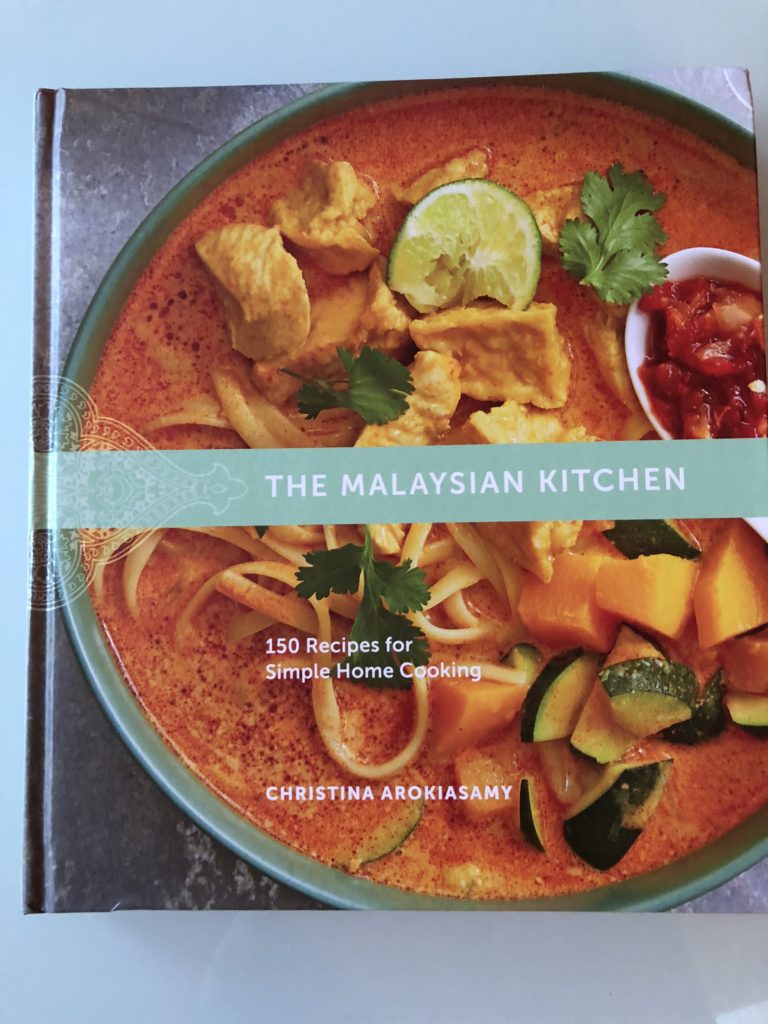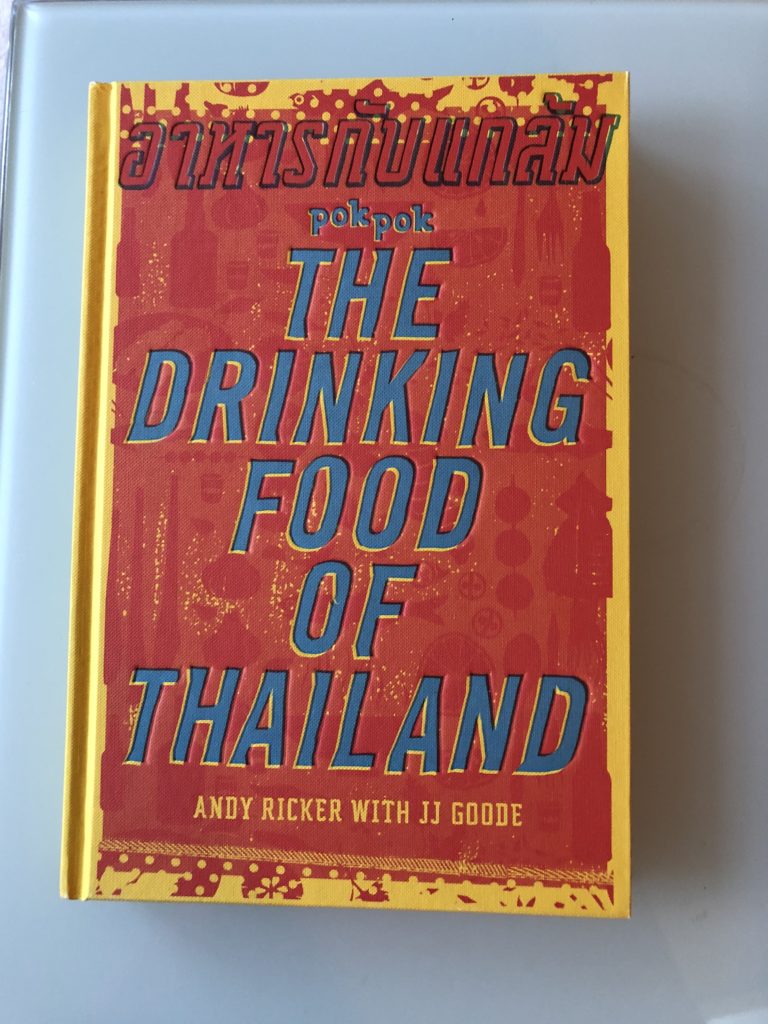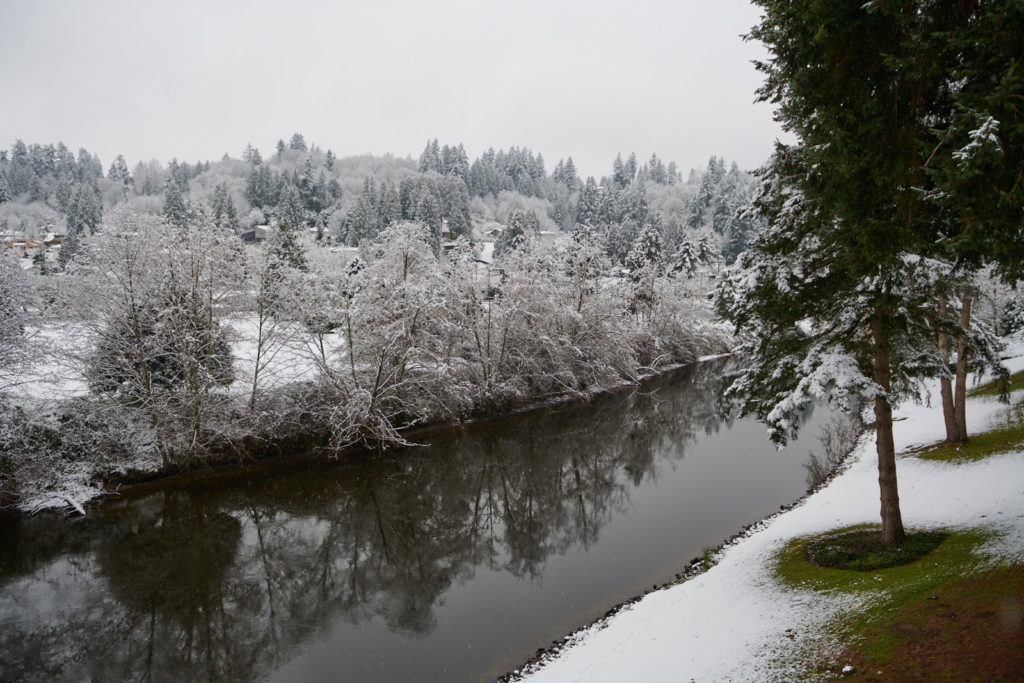Periodically I have a weekend when all I have to do is bake. Normally these baking frenzies occur around Christmas; however, we didn’t get back from vacation until December 20th. So there was pent-up demand to fling some flour around.
Two occasions precipitated this weekend’s frenzy. Last week our friend BG gifted me with some of his sourdough starter. On Sunday we got together with the crew to welcome BG’s beloved back in town for a visit. It was also Julian’s birthday. Julian had requested chocolate or pecans, but not in the same dessert. So the frenzy broke down as follows:
Saturday: Sourdough whole wheat bread and pancakes. The bread came out of Bernard Clayton, Jr.’s New Complete Book of Breads. For some reason, these loaves didn’t rise very high. The pancakes came out of the King Arthur Flour 200th Anniversary Cookbook. They were nice and fluffy, but they burned on the outside before they were done inside. I should have thinned out the batter with a little milk.
Sunday: This day of baking was a bit more successful. I made the buttermilk cocoa cake out of Laurie Colwin’s More Home Cooking. The second was a Huguenot torte from The Lee Bros. Charleston Kitchen. This was an eggy batter that contained diced apple and pecans. Both of these recipes were quite easy. Both recipes were complementary in that the cake contained no eggs, while the torte contained no dairy. Both desserts were inhaled at the Sunday night soirée. One person was chipping away the dregs of the Huguenot torte off the sides of the pan. Both of these recipes will be made again.
Jan 15
Baking Frenzy
Permanent link to this article: http://ediblethoughts.com/2018/01/15/baking-frenzy/
Jan 13
You Can Take the Scientist Out of the Lab…
But you can’t take the lab out of the scientist. Although I haven’t worked in a lab for over 15 years, I still use my scientific chops in the kitchen when I cook or bake.
- Do the background research. Back in the day, I’d pull research articles and evaluate the methods and results. Now I hunt and evaluate recipes for feasibility.
- Formulate the null and alternate hypotheses. Primary null hypothesis: This recipe won’t work. Primary alternate hypothesis: This recipe will work. Secondary null hypothesis: Julian will be unimpressed.
- Follow the protocol – I mean recipe. Take note of any deviations or substitutions (known here as gemisches).
- Analyze the data, i.e., taste the results. Did we reject both null hypotheses?
- If the null hypotheses stand, discard the recipe or see what can be changed to improve it. If we reject the null hypotheses, replicate the recipe.
Permanent link to this article: http://ediblethoughts.com/2018/01/13/you-can-take-the-scientist-out-of-the-lab/
Jan 13
24/7 Access is Overrated, Part Two
[This is a sequel to one of my early posts.]
When you work in a cube farm, privacy is at a premium. You may not want your coworkers to know that you’re scheduling a biopsy, having an argument with your teenager, or setting up an interview for a new job. But using your cell phone in a multi-stall restroom is an unwise choice, even if you’re expecting an important call. Consider the following reasons:
- Privacy. The average office or factory restroom is the LEAST private place at work. For example, the ladies’ room on my floor has three stalls for at least 50 women.
- Ambient sound. It doesn’t sound very professional if you’re scheduling a job interview and the hiring manager can hear toilets or urinals flushing in the background.
- Forgetfulness. The restroom is a common place to leave a phone.
- The EEEUWW factor. All that hand hygiene indoctrination goes for naught when you set your phone down in a restroom. Or, heaven forbid, you drop the phone.
Do yourself and others a favor, and leave your cell phone at the cube. You can always call or text later.
Permanent link to this article: http://ediblethoughts.com/2018/01/13/24-7-access-is-overrated-part-two/
Jan 09
Core Beliefs
Many years ago I took, and then co-taught, an Adult Religious Education course called “Building Your Own Theology.” Most of the class members were, like me, raised in other faith traditions before finding a Unitarian Universalist congregation. Over the years I’ve refined my “theology” into some core beliefs:
• This is the only life I have.
• Pay attention to what’s happening, and speak up for justice and compassion.
• Share time, knowledge, and resources with others. Someday I may need theirs.
• Everything changes. Nothing is static.
• In the words of an old hymn, “Revelation is not sealed”. There are timeless truths in ancient stories; however, we can’t see the current world through long-dead eyes, nor can we deal with our current problems using old ways. While smiting one’s adversaries was a preferred strategy 3,000 years ago, it doesn’t work so well these days.
• Science and reason can coexist with awe at the wonders of the Earth and cosmos. Example: My building emptied out during the solar eclipse in August. Even the most jaded physicians and scientists were slack-jawed at the sight of the Moon blocking the Sun.
Some of you are wondering if I believe in God. It’s complicated. While I don’t believe in an old white guy sitting on a cloud passing judgment on Earthlings, I do believe in a force (small f) that’s beyond any description. It can be seen in the night sky and in broad daylight. It can be felt in the gentle touch of another person. It can be heard in music. It can be smelled in the early spring, even before the daffodils bloom. Finally, this force can be tasted in fresh water and a good meal. In the words of another hymn attributed to the mystic Hildegard of Bingen, “I am that great and fiery force, sparkling in everything that lives…” It’s the miracle of life on a tiny rock in the vast universe.
Permanent link to this article: http://ediblethoughts.com/2018/01/09/core-beliefs/
Jan 02
A Safety Message
Okay, hipsters. I know black is the de rigueur color for apparel, but consider this: You leave for work in the dark, and come home from work in the dark. If you walk to and from a bus stop or parking garage, you may be hard for drivers to see at a crosswalk. If a driver can’t see you, you could wind up as a hood ornament. So lighten up already!
No, this doesn’t mean you need to wear all white. Wear or carry something that has a light or reflective material on it. For example, I have a black ski parka with white reflective stripes on it. You can put a small light on your backpack or book bag. Even running shoes can have reflective material on them. Anything that allows you to be seen in the dark will help.
Standing out can be a good thing in the winter. Visibility = safety.
PS: Get your nose off the cell phone when you’re walking.
Permanent link to this article: http://ediblethoughts.com/2018/01/02/a-safety-message/
Jan 02
On New Year’s Day
We spent New Year’s Eve with our former neighbors. Our host made black-eyed pea soup, while Julian and I brought the fixings for raclette. After dinner we played Taboo. The party broke up around 11, so I was in bed by midnight. Julian was left to eat his stroke-of-midnight herring with the cats. (He believes that if you eat herring at the stroke of midnight, you’ll have a good year. I think he and his friend Scott concocted this superstition as an excuse to eat herring.)
As the U2 song says, all was quiet today. I thought about riding the bike up to Matthews Beach to watch the Polar Bear Plunge, but thought better of it when I checked the outdoor temperature. After lunch, Julian and I went for a walk around the former golf course (aka Bothell’s newest park). We started off on the back 9. A little snow and ice were still on the ground, but it was mostly mud. The gate between the back 9 and Blyth Park was open, which allowed walkers to do a larger loop. We crossed the street to walk the front 9. The front 9 is much boggier than the back 9. We were joined by many other people walking their kids and dogs on both halves of the park.
Happy New Year. I hope you all have a happy, healthy, and peaceful 2018.
Permanent link to this article: http://ediblethoughts.com/2018/01/02/on-new-years-day/
Dec 31
Asian Groceries for the Newbie
Walking into an Asian supermarket for the first time can be an overwhelming experience. Who knew that there were so many varieties of soy sauce? What am I supposed to do with some of these herbs? And what is natto? Relax. Take a deep breath. Here is a guide to help newcomers to Asian cuisines negotiate shopping for ingredients.
- Start off small. Arm yourself with a recipe that requires just one or two unfamiliar ingredients. For example, maybe it’s a stir-fry that uses yard-long beans instead of regular green beans or an herb you’ve never tried before. That way you’re not out too much money if you don’t like the result. Alternately, you can try a sack of frozen potstickers or other item that you’ve enjoyed at a restaurant before.
- Get advice from a friend. If you have coworkers or friends who do more cooking in a particular cuisine than you do, ask them where and for what to shop.
- Pay attention to the store’s specialty. Even a large store may not carry all ingredients in a particular cuisine. For example, Uwajimaya in the International District of Seattle doesn’t carry the tapioca starch noodles I like. I have to go up the street to Little Saigon to get them.
- Don’t be afraid to ask questions of the staff. In this respect, a small Asian grocery can be advantageous. I used to frequent a tiny Asian grocery run by a friendly Cambodian woman when I lived in Greensboro. She offered samples and gave advice on ingredients and their use. Taking along a cookbook with pictures can be helpful to communicate with staff who may not speak much English.
- Try an unfamiliar food. Last week I bought some purple sweet potatoes to include in my Christmas Eve roasted vegetables. They worked well, and added some color to the dish.
- Keep notes. Maybe you prefer one brand of fish sauce over another, or your family thinks one herb is nasty-tasting. I remember trying a brand of instant dashi (Japanese fish broth) that was awful. I also learned that Vietnamese-style fish sauces were less salty than Filipino brands. Keeping track can be helpful to avoid future mistakes.
Permanent link to this article: http://ediblethoughts.com/2017/12/31/asian-groceries-for-the-newbie/
Dec 30
The Christmas Cookbook Haul
I got three cookbooks this year. One is a memoir with recipes, the other two are conventional cookbooks.
Unforgettable: The Bold Flavors of Paula Wolfert’s Renegade Life, by Emily Kaiser Thelin. This is the memoir with recipes, and has a poignant story behind it. Thelin (along with Andrea Nguyen) decided that Wolfert’s story needed to be told. Thelin and Nguyen started a Kickstarter campaign to get the book published. Wolfert is dealing with dementia, and the book cuts between past and present. The book is a true labor of love.
The Malaysian Kitchen, by Christina Arokiaswamy. In an earlier post, I joked that my ancestors took the Mayflower the long way to Plymouth Rock through Southeast Asia. They may have stopped in Malaysia along with Vietnam. Many of the recipes use ingredients that are easy to find (in Seattle, at least).
Pok Pok: The Drinking Food of Thailand, by Andy Ricker with J.J. Goode. Pok Pok is the go-to Thai restaurant in Portland. (One of my coworkers spent an hour on line earlier this week to eat dinner there.) Ricker highlights the food that goes along with alcoholic beverages in Thailand. Some of my friends would have to be very drunk to try some of these dishes, e.g., pork brains grilled in banana leaves. There are a few more accessible dishes that don’t require heavy inebriation.
Permanent link to this article: http://ediblethoughts.com/2017/12/30/the-christmas-cookbook-haul/
Dec 25
Bothell’s Newest Park
While we were in France, the Bothell City Council finalized purchase of the former Wayne Golf Course. The vote was unanimous to purchase the back 9, mostly because the no votes for the front 9 vote were not in attendance. The park is already in use. Some folks have pick-up disk golf games on the weekends. There is a formal disk golf course at nearby Blyth Park, but the trees get in the way. Today we saw walkers and cross-country skiers on the back 9. This park will connect with the Burke-Gilman Trail and Blyth Park to create more than a mile of contiguous green space along the Sammamish River. Here’s hoping that other cities in the area follow Bothell’s lead to save open space from rampant development.
Permanent link to this article: http://ediblethoughts.com/2017/12/25/bothells-newest-park/
Dec 25
White Christmas at Casa Sammamish
The Seattle area has not seen a white Christmas since the weeklong snowstorm of 2008. This was when our neighbors turned our street into a sled run for the annual Candy Cane Lane festivities.You can see pictures on Julian’s Zenfolio site. The then-Seattle mayor graded his handling of snow removal on the streets as a B. The voters of Seattle thought otherwise and voted him out of office the following year – during the primary.
The snow started falling yesterday during the Seahawks-Cowboys game. I was too busy chopping up and roasting vegetables to notice until just before we left for the annual Christmas Eve dinner-white elephant gift exchange. We took Julian’s car and made it to our friends’ house. After living in that neighborhood for 10 years, I knew the least steep way to get there. A fine time was had by all. Julian got a crafts with cat hair book, while I got a Rosie the Riveter action figure. We went back the way we came, without drama.
The snow was still around when I got up this morning. With luck, it will be gone before I have to go to work tomorrow. Merry Christmas!

Permanent link to this article: http://ediblethoughts.com/2017/12/25/white-christmas-at-casa-sammamish/

Recent Comments